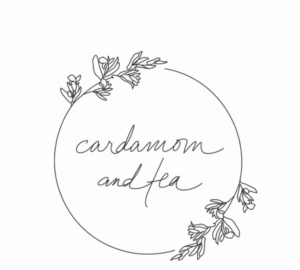cardamom gingerbread rose cake

loosely adapted from a Cook’s Illustrated recipe
- Prep Time: 30 minutes
- Total Time: 90 minutes
- Yield: 10 servings
Ingredients
for the cardamom rose gingerbread cake:
- butter for greasing the pans
- 250g (1 3/4 cup) all purpose flour
- 21g (1/4 cup) cocoa powder
- 14g (2 tablespoons) ground ginger
- 6.5g (1 1/2 teaspoons) baking powder
- 3g (1/2 teaspoon) baking soda
- 2.5g (1 teaspoon) ground cinnamon
- 3g (1 1/4 teaspoons) cardamom
- 5.5g (3/4 teaspoon) salt
- 240g (1 cup) buttermilk
- 170g (1/2 cup) molasses
- 300g (1 1/2 cups) sugar
- 150g (3/4 cup) vegetable oil
- 3 large eggs (140g)
- 30g (2 tablespoons) fresh grated or puréed ginger
- up to 45g (3 tablespoons) rosewater (add 1 tablespoon at a time)
for the rosewater cream cheese glaze and decoration:
- 227g (8 oz) package cream cheese, softened at room temperature
- 57g (4 tablespoons) butter, softened at room temperature
- 210g (1 1/2 cups) powdered sugar
- up to 22g (1 1/2 tablespoons) rosewater (add 1 or 2 teaspoons at a time)
- a few drops pink food coloring (optional)
- additional buttermilk (as needed)
- edible crumbled dried rose buds* (optional)
Instructions
- Bake the cake layers: Preheat the oven to 350° F/180° C convection.** Butter 2 8-inch cake rounds, line them with parchment rounds and then butter the parchment.
- Sift together the flour, cocoa, ground ginger, baking powder, baking soda, cinnamon, cardamom, and salt.
- In a stand mixer, fitted with the paddle attachment (or in a mixing bowl with a whisk), combine the buttermilk, molasses, and sugar. Then add the vegetable oil, eggs, fresh ginger, and 1 tablespoon of rosewater at a time. Mix and taste between rosewater spoonfuls, and add more as necessary (different brands vary significantly in strength. Too much will taste soapy).***
- Add the dry ingredients to the wet ingredients, and mix at low speed just until it comes together (do not over-mix). Fold 3 or 4 times with a rubber spatula, scraping the bottom of the bowl to make sure it’s fully incorporated. Pour into the parchment-lined rounds, and bake for about 22 minutes. They’re done once they’re no longer wobbly in the center, and a toothpick inserted in the middle comes out clean with just a few crumbs.
- Let them cool in the pans for 10 minutes. Run a knife around the pans’ edges to loosen the cakes. Be very careful when you invert the cake—it has a very delicate crumb. Place a plate over one pan, flip the whole thing in 1 swift motion, and carefully remove the pan. Place a cooling rack over the inverted cake on the plate, and carefully flip it again so it’s right-side-up on the rack. Repeat with the other one, and let them cool completely.
- Make the glaze: Beat the cream cheese and butter together until they lighten a little, about 3 to 5 minutes. Add the powdered sugar and a little rosewater, and beat together. Taste, and continue adding rosewater until you’re happy with the flavor (careful not to overdo it).
- Once you’re happy with the flavor, take a look at the consistency. It should be very thick, but pourable, like perfectly tempered chocolate. If you need to thin it out slightly (probably because you went with a smaller amount of rosewater), add a teaspoon of buttermilk (or milk) at a time, until you reach the right consistency, but careful not to let it become thin or runny. Or, if you like it on the spreadable side, simply swoosh it on top instead of glazing the cake.
- Once you’re happy with the consistency, add a couple drops of pink food coloring, and keep mixing in more drops until it’s a pale pink color (careful not to make it too bright—I used 6 drops of pink to get this color. Use much less if you’re using red).
- Once the cakes are cool, carefully shave off the slight hump of 1 cake with a serrated knife. Place that layer cut-side-up on a plate or cake pedestal. Top with about 1/3 of the glaze, and spread into a thin layer. Place the second layer bump-side-up. Top with the remaining glaze, encouraging it to drip down the sides a little. Sprinkle with rose petals and seeds, and serve.
Notes
* When I crumble the rosebuds, I like to also use the little black seeds that fall out. They add some nice contrast to the pale icing and colorful rose petals. Some rose buds will have yellowish-brown petals on the inside—I just use the outer pink ones for decorating (sometimes with a little yellowish-brown), and save the scraps to make tea.
** If you don’t have convection, you may need to bake them slightly longer. Keep an eye on them, and take out of the oven once they’re no longer wobbly in the center.
*** If you don’t want to eat raw egg, wait to add the eggs until after you’ve tasted it, but keep in mind it should taste a little rosier without them. The cake has rosewater in both the frosting and the cake, so it’s better to under- than over-do it, and you can always sprinkle the finished cakes with a few drops if you didn’t add enough.
Find it online: https://cardamomandtea.com/120/cardamom-rose-gingerbread-cake/
